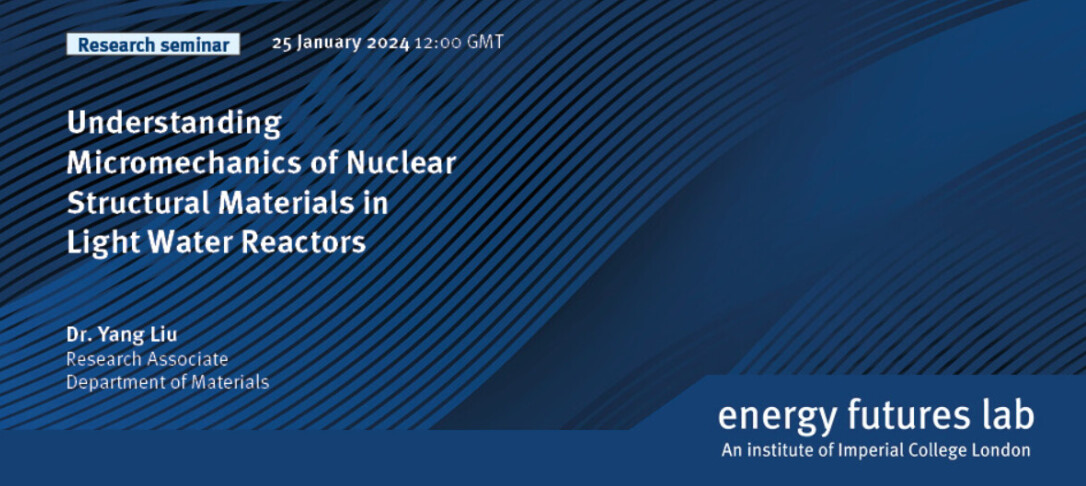
Understanding Micromechanics of Nuclear Structural Materials in Light Water Reactors
Zircaloy, a key player of fuel cladding materials for fission power plants, embarked on a fascinating journey through the demanding conditions of high temperatures, intense pressure loads, hydrogen immersion, and irradiation damage during its in-service life. Amidst this intricate dance of environmental challenges, Zircaloy undergoes irreversible deformations manifesting through localised slip events which leads to unexpected creep fatigue failure during thermo-mechanical cycles.
Regarding up-to-date advancements, crystal plasticity modelling, integrating with microscale testing, emerges as a powerful duo, extracting accurate properties for various slip modes within single crystals. With the integration of in-situ electron microscopy and digital image correlation methods, crystal plasticity modelling is able to quantitatively characterise and to understand the early-stage evolution of dislocation slip events. The integration at microscale could be extended, weaving connections to the component level across diverse metallic materials and upscaling the microscale material properties to the bulk tensile strength, cyclic creep fatigue strength, etc.
The current talk focuses on shifts from conventional material design approaches to a microscale strategy that targets dislocation slip and stored energy, with physical mechanisms considered. By integrating the microscale computational and experimental methods, the future promises a narrative where the microstructure becomes one of the main role players, steering the course towards resilience improvement for Zircaloy. Following this logic path, a vision emerges – the ability to engineer the microstructure – aiming to enhance the environmental fatigue resistance for nuclear materials.
Biography:
Dr Yang Liu holds a Ph.D. in Solid Mechanics and a B.Sc. in Engineering Mechanics in Dalian University of Technology. As a research associate in Imperial College, he worked with nuclear and aerospace materials and led efforts around computational development of micromechanical modelling. Through collaborations with Rolls-Royce, Manchester, Oxford and UKAEA, he improves the micromechanical understanding of zirconium and titanium alloys. Yang will be joining Leicester as a lecturer and he aims to develop fundamental research on micromechanics linking to the service performance improvement in applications of aero, energy, and nuclear industries.
About Energy Futures Lab
Energy Futures Lab is one of seven Global Institutes at Imperial College London. The institute was established to address global energy challenges by identifying and leading new opportunities to serve industry, government and society at large through high quality research, evidence and advocacy for positive change. The institute aims to promote energy innovation and advance systemic solutions for a sustainable energy future by bringing together the science, engineering and policy expertise at Imperial and fostering collaboration with a wide variety of external partners.


